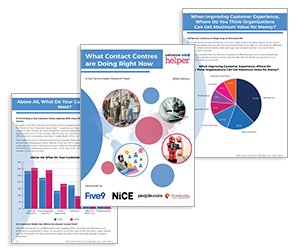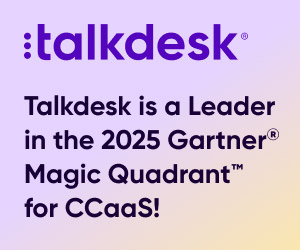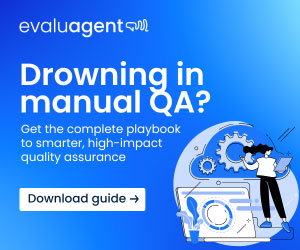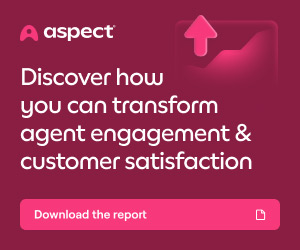This blog summarizes the key points from a recent article from David McGeough at Scorebuddy, where he explores how to build a compelling case for adopting AI-powered QA tools in the contact centre.
Modern contact centres process massive volumes of interactions daily, yet traditional manual quality assurance (QA) methods only cover a small fraction, leaving most insights untapped.
For large enterprises especially, this gap means missing valuable data on customer sentiment, agent effectiveness, and overall performance.
QA managers are well aware of the challenges: manual QA is slow, costly, and limited in scope.
But communicating the need for a shift to AI-driven solutions to decision-makers can be difficult, even with clear advantages like enhanced customer satisfaction, greater efficiency, and stronger employee engagement.
8 Steps to Building a Case for AI-Driven Call Centre QA
1. Identify the Key Challenges and Explain Their Significance
Traditional call centres that depend on manual quality assurance (QA) are ill-equipped to meet the growing demands of modern customer and operational needs.
With rising customer expectations, delivering seamless service and a top-tier experience is more critical than ever.
Manual QA processes fall short, leading to inefficiencies like time-consuming repetitive tasks and overlooked insights. To effectively advocate for AI-powered QA, begin by detailing the core challenges of the current manual approach:
- Slow QA Cycles: Manual reviews take time to assess each interaction, delaying feedback and hindering real-time coaching.
- Limited Coverage: Without automation, only a small fraction of interactions are evaluated, leaving valuable data unexamined.
- Bias and Inconsistency: Human errors, fatigue, and biases lead to uneven evaluations, diminishing performance review reliability.
- Decreased Agent Engagement: Inconsistent or inaccurate QA can reduce agent morale, resulting in a negative impact on both customer satisfaction and staff retention.
- Missed Insights: Manual reporting may fail to capture the full scope of contact centre performance, leaving key operational issues unnoticed.
- Evaluator Burnout: The time-consuming nature of manual reviews can lead to inaccurate evaluations and inconsistent quality assessments.
- Fragmented Data: Without integrated systems, valuable insights from various tools and platforms remain siloed, preventing a comprehensive understanding of performance.
2. Collect and Quantify Data to Highlight the Impact
Begin by gathering reports from your current QA process. Track the number of customer interactions evaluated (calls, emails, chats) over a specific period, alongside the time spent reviewing each one.
Document how frequently coaching sessions take place and calculate labour costs compared to the savings that AI-powered QA solutions would offer.
Additionally, identify gaps in your current manual QA process that may be going unnoticed:
- Shifts in Customer Sentiment
- Compliance Violations
- Repetitive Patterns in Agent Behaviour
- Product or Service Concerns Indicated by Keywords
AI can drastically reduce the time spent gathering this information, providing deeper, real-time insights that manual methods simply can’t match.
3. Connect QA Improvements to Broader Business Objectives
Your QA process influences key business outcomes. By illustrating how your QA KPIs relate to business goals, you can show the clear potential of AI-driven call centre QA software. Here are metrics to consider:
- Average Handle Time (AHT): Reducing AHT through more efficient issue resolution can drive down costs.
- First Call Resolution (FCR): A higher FCR rate can foster customer loyalty, minimize repeat calls, and improve NPS.
- Quality Scores: High-quality evaluations reflect better customer experiences and reduce escalations.
- Compliance Rates: Proper compliance adherence reduces regulatory risks and audit-related costs.
- Agent Engagement: Timely, personalized feedback can boost agent morale and productivity.
- Customer Satisfaction (CSAT): Happy customers are more likely to return, increasing revenue.
- Net Promoter Score (NPS): A great experience encourages customers to recommend your business, further enhancing your brand reputation.
These metrics demonstrate the value AI can bring to various departments, from marketing insights to improved risk management.
4. Showcase the Advantages of AI-Powered QA Tools
AI-powered call centre QA software transforms how you monitor and enhance agent performance:
- Full Interaction Coverage: AI enables the evaluation of every call, chat, and email, delivering actionable insights.
- Customizable AI Scorecards: Set specific evaluation criteria, automating the process and speeding up feedback loops.
- Automated Compliance Detection: Identify regulatory breaches in real-time, mitigating risk and ensuring adherence.
- Faster Coaching Cycles: With quicker feedback, agents receive real-time coaching, improving their performance more swiftly.
- Elimination of Human Bias: AI ensures objective, consistent evaluations based on standardized criteria.
- Advanced Analytics: Use sentiment analysis, behavioural patterns, and keyword detection to prioritize coaching and track improvements over time.
AI doesn’t replace human expertise; it complements it. While AI streamlines routine tasks, human intervention is crucial for interpreting nuanced interactions and crafting effective development plans.
5. Demonstrate the ROI of AI-Powered QA
The financial benefits of implementing AI-powered QA are clear in time, productivity, and employee engagement:
- Time Saved: For example, if a QA evaluator saves 20 minutes per review, completing 400 reviews a month, this results in over 133 hours saved annually.
- Improved Performance: AI enables faster issue resolution, leading to better FCR and shorter AHT.
- Increased Agent Confidence: With more timely feedback, agents are more likely to improve their performance and engage with customers more effectively.
- Reduced Compliance Risks: AI identifies potential compliance issues instantly, reducing manual efforts and increasing accuracy.
- Enhanced Agent Retention: Consistent, personalized feedback boosts agent morale and reduces turnover, cutting recruitment and training costs.
- Faster Decision Making: AI-driven insights allow managers to quickly respond to trends and performance shifts, preventing costly delays.
6. Address Potential Concerns From Stakeholders
Anticipate potential objections from stakeholders and provide clear responses to reassure them:
- Cost: Present the total cost of ownership versus savings, including reduced manual review time, lower turnover, and compliance cost reductions.
- Integration: Highlight system compatibility, APIs, and implementation timelines that minimize IT involvement.
- Measuring ROI: Use specific KPIs like time saved per review, coaching turnaround time, and risk reduction to demonstrate ROI.
- Workflow Disruption: Discuss a phased rollout approach, pilot programs, and training plans to ease the transition.
- Data Security: Reassure stakeholders with encryption standards and regulatory compliance protocols.
Addressing concerns proactively will help build confidence in the proposed AI solution.
7. Develop a Plan for a Smooth Rollout
Start with a pilot project – perhaps a small team or a single channel – to test the AI-powered QA system.
Design training plans that are tailored to the roles of evaluators, supervisors, and agents, and include workshops to build confidence in the new system. Define key performance indicators (KPIs) to monitor during the rollout, such as:
- Evaluation Completion Rates
- Coaching Feedback Turnaround
- AI Confidence Scores
Collaborate with the vendor to calibrate the AI model and ensure accuracy. Track results to ensure that AI delivers the expected benefits before expanding it across the call centre.
8. Present Your Business Case Effectively to Stakeholders
Craft a concise, impactful pitch deck or one-pager to capture the attention of stakeholders quickly. Tailor different versions of your pitch to the interests of specific stakeholders, focusing on the most relevant business outcomes like cost savings, enhanced customer satisfaction, and increased agent retention.
Be sure to include benefits such as:
- Improved Efficiency: Accelerated evaluations allow analysts to focus on high-value work.
- Consistent Quality: Objective, standardized scoring ensures fairness and reliability.
- Risk Mitigation: Real-time alerts reduce the chance of compliance violations.
- Actionable Insights: Advanced analytics identify areas for improvement and revenue growth.
- Motivated Agents: Faster feedback improves agent confidence and engagement, reducing turnover.
This blog post has been re-published by kind permission of Scorebuddy – View the Original Article
For more information about Scorebuddy - visit the Scorebuddy Website
Call Centre Helper is not responsible for the content of these guest blog posts. The opinions expressed in this article are those of the author, and do not necessarily reflect those of Call Centre Helper.
Author: Scorebuddy
Reviewed by: Megan Jones
Published On: 10th Jun 2025
Read more about - Guest Blogs, David McGeough, Scorebuddy






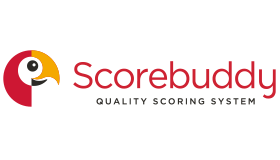 Scorebuddy is quality assurance solution for scoring customer service calls, emails and web chat. It is a dedicated, stand-alone staff scoring system based in the cloud, requiring no integration.
Scorebuddy is quality assurance solution for scoring customer service calls, emails and web chat. It is a dedicated, stand-alone staff scoring system based in the cloud, requiring no integration. 




